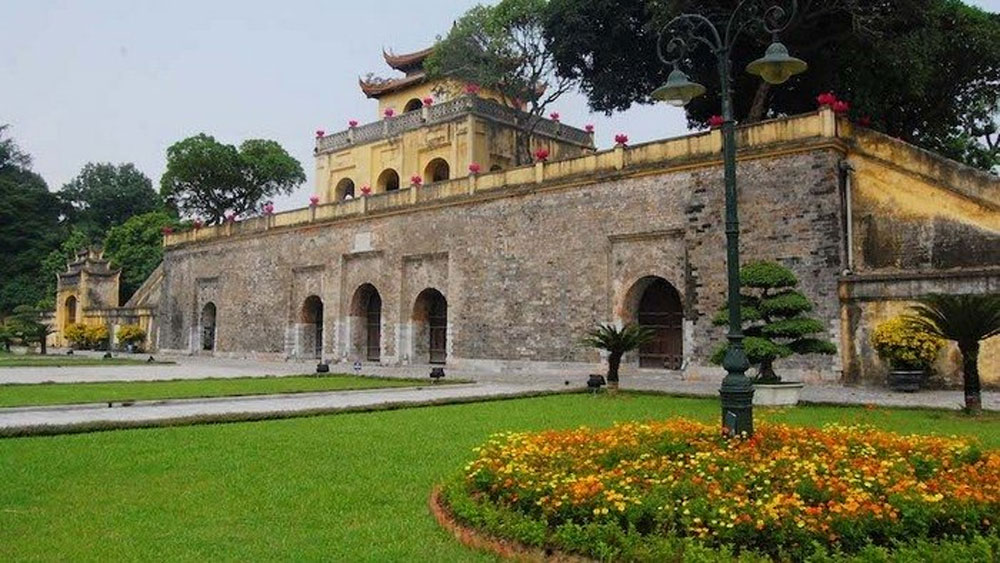Creative tourism to be developed based on culture
The preservation and embellishment of historical and cultural relic sites will serve for traditional education and socio-economic development while be associated with the development of tourism. The promotion of heritages recognised by UNESCO will contribute to introducing the image of the land and people of Vietnam to international friends.
 |
|
The Thang Long Imperial Citadel in Hanoi is not only a world cultural heritage site but also an attractive destination for tourists. |
Vietnam is home to a massive system of historical-cultural relicsand scenic spots at the national and local levels around the country, along with traditional festivals and trade villages, unique cuisine of the regions, cultural and art heritages, folk performances and museums.
They are extremely valuable tourism resources which are imbued with unique cultural characteristics of Vietnam as well as an important resource to create strengths and differences for tourism products. During 2019-2021 period, Vietnam was voted by the World Travel Awards (WTA) as "Asia's Leading Cultural Destination", which proved that Vietnamese cultural heritages' values have always been attractive for international tourists.
During 2015-2019 period, before the outbreak of the Covid-19 pandemic, Vietnam’s tourism sector gained impressive milestones with an average growth of 22.7 percent per year in arrivals and 20.7 percent per year in revenue. The total revenue from tourism reached 755 trillion VND in 2019, contributing 9.2% of the country’s GDP. In particularly, cultural tourism has affirmed its decisive role in gaining this impressive result.
Visiting cultural heritages in Vietnam was the second favourite activity of international tourists, following relaxing on the beach, by the sea. Many products such as tours to the ancient capital city of Hue, Hoi An ancient town, My Son Sanctuary and Trang An scenic landscape complex and traditional festivals, have received great attention from tourists.
However, the rapid growth of tourism has posed such challenges as the excessive commercialisation of many cultural heritage values, which degraded cultural and traditional values while diluting identity; the breaking and change of many traditional cultural features, lifestyle, customs and practices; and the emergence of foreign cultural assimilation and the conflicts of interest sharing.
To overcome the above challenges, creative tourism on the basis of culture has been considered as an effective measure and direction. Creative tourism will offer visitors the opportunity to develop their creative potential through the interaction and direct participation in experiences towards learning about the local culture and characteristics of the destinations.
Developing creative tourism based on culture will help Vietnam's tourism diversify the system of tourism products, add value to traditional cultural tourism products, develop unique tourism brand and further enhance the promotional activities via social networks, attract more mid- to high-end customers, and improve the sector’s competitiveness.
To achieve these accomplishments, it is crucial to make adjustments in policy making and actions while recognising the right role, benefits and responsibility of the community in preserving and promoting heritage values and tourism development.
The managers should ensure the harmony between cultural heritage conservation and tourism development; focus on the sustainable development in tourism activities in relic sites and cultural heritages; and respect the diversity of culture and integrity of the intangible cultural heritages. State management agencies in tourism at central and local levels need to carry out the investigation, classification and assessment of tourism resources in a synchronous manner; and build a national database on natural and cultural tourism resources.
The development of creative tourism products based on culture must ensure certain principles.
According to leaders of the Vietnam National Administration of Tourism (VNAT), the tourism and cultural sectors will have many jobs and measures to complete in the near future. However, the promotion of cultural heritages in association with tourism development will play a great role, creating the restoration and breakthrough for Vietnamese tourism.
Source: NDO
 Bắc giang
Bắc giang















Reader's comments (0)